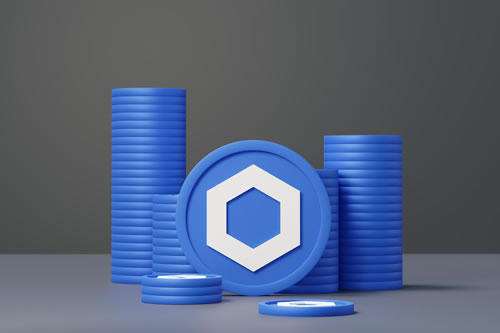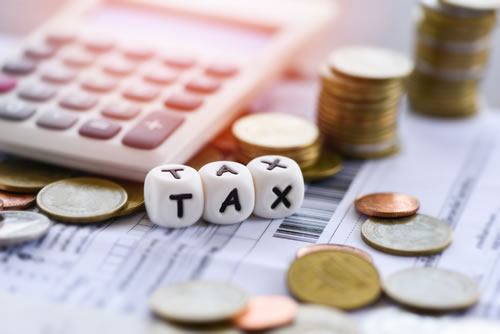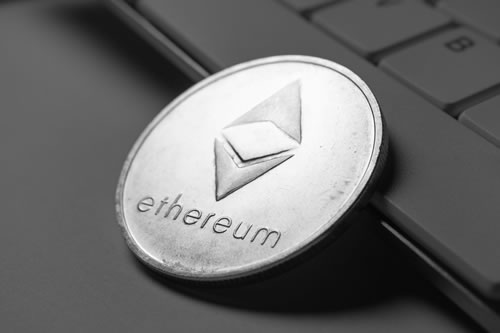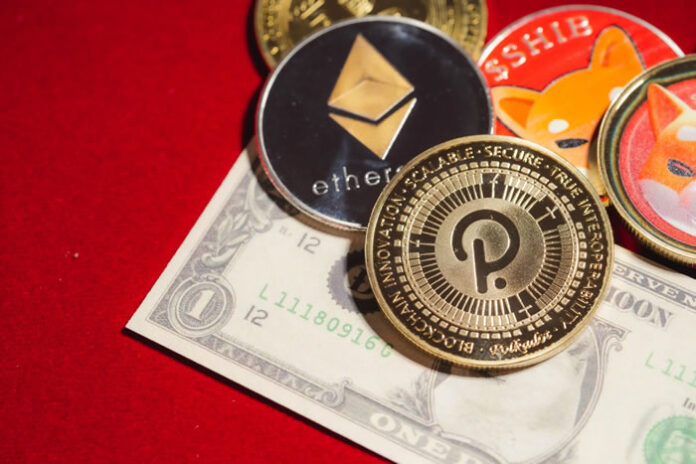Intro
Token design is an undervalued, underappreciated, and critical aspect of a blockchain project.
Regardless of the chain and technology you use to create a token or the overall maturity of the token-creation project, you cannot disregard token design. Many teams or lone token creators are exposing themselves to a failure risk. because their projects lack properly designed tokenomics.
Tokenomics Dictionary
To begin, we must start with the basics:
Each and every use case requires a different type of token, providing the creator with different qualities and possibilities native to the token. While there are too many to name, the following are a few of the most well known and workable:
Layer 1 Token
Layer 1 blockchain refers to the underlying blockchain architecture. This layer allows the creation of tokens, with a few lines of code, using smart contracts.
Layer 2 Token
Layer 2 tokens are built on top of the existing layer; for example, all of the tokens built upon the Ethereum blockchain are called ‘ERC-20 tokens’.
Utility Token
A utility token mainly revolves around regulatory aspects:it allows to have future access to a company’s product or service, even if there is no guarantee.
Security token
A security token is typically used as a form of identification for physical access to something, or as a method of computer system access, and is a device that provides two-factor authentication (2FA) to prove the identity of a user during the process of login.
Fungible Token
All tokens of this kind are identical to each other, with each having the same value the same value
Non-fungible Token (NFT)
NFTs are unique, non-divisible, and non-interchangeable tokens:they represent the a certificate of ownership and authenticity, written on blockchain, of a single asset (digital or physical).
The Four Pillars of Token Economics Design
You can have the best and most original token idea in the world, but above all else, defining its use cases is essential to ensure its success and worth.
The following are a few underestimated steps to take note of and follow when creating a valuable token economics model.
1) Define Token Utility and Workflow
If you cannot answer the question, “Why do I need a token?”, you can stop reading this article now and get back to the drawing board. Plain and simple, your token should have a reason to exist; without a clear-cut end goal, there is no value for an investor or end user. Remember, the purpose of a token is usually determined by the utility it provides in a product ecosystem.
Which brings us to the WWH…Who, Why, and How will someone use your token?
Here are two examples of existing token workflows:
- Ethereum (ETH)
This ecosystem is populated by Users, Validators, and Developers. The User can facilitate transactions and use DApps: decentralized applications whose operation is based on nodes interacting with each other. The Validator can earn rewards for validating transactions and mining tokens. They can also govern ecosystem decisions. The Developer can earn rewards for building applications and improving the network code.
- Binance (BNB)
This ecosystem is populated by Customers, Developers, and the Platform. Customers can buy tokens, make shopping online and generate discounts for themselves when using BNB for such purchases. There are various ways for generating revenue using the BNB credit card, holding BNB, and participating in Binance launchpad projects. The Developer can build applications and create and list their tokens on the platform. The Platform earns service fees and can sell and burn tokens.
Distribution and Workflow
We have many ways to get tokens flowing in and out of our network. That being said, we have to maintain a consistent level of transactions and high circulation volume.
There has to be some sort of incentive to increase the “ins” and create some sort of the pressure that, in some particular cases, can precede a FOMO: Fear Of Missing Out.
So we have to ask ourselves: What are the values that we are promoting and how can we render them more palatable to the token?
Another thing that we have to do is to make a census of the ways to inject or payoff.
Last but not least, we have to find a way to guarantee and to incentive, a long-term holding, with a low cash-out rate, which can be detrimental, especially in the early phases of our project, with sustainability in the long run.
2) The Basics
When you use a Layer 2 solution to create your token, all the token code and business logic will be wrapped up inside a smart contract. Consequently, it is vital to fully understand and address your business model in advance of production because it is impossible to change most of the things written in the token code once it goes into production.
Now, let’s dive into the technical aspects and basic terminology of token economic modeling:
Smart contracts
The three fundamental characteristics of smart contracts are transparency, automation, and immutability. Smart contracts are the incorporation of contractual clauses encoded in computer language, software, or computer protocols, which are used for the realization of contractual relationships by conferring autonomous execution of the programmed terms upon the occurrence of certain conditions previously defined.
Market Capitalization
Market capitalization (market cap) is the total value in FIAT of all the shares of a company. In the cryptocurrency industry, market capitalization is calculated by multiplying the total number of coins that are in circulation by the price of a single coin at any given time.
In short: Market Cap = Token Supply * Token Price
The market cap will be hugely dependent on how much money you will raise during your Initial Coin Offering (ICO).
Initial Coin Offering
An Initial Coin Offering (ICO) is the funding mechanism by which cryptocurrencies are collected or obtained, allowing the launch of a new service or a new currency. The investor delivers the cryptocurrencies and receives an amount of tokens from the company.
Total Token Supply

Total token supply refers to the number of coins or tokens in existence and circulation or held in various ways. It is the sum of the coins already mined (or issued) minus the total of the coins burned or destroyed.
Therefore, the total supply includes both the circulating supply and the coins that have yet to enter the open market. For example, coins that are held on a vesting period, typically follow an ICO event. Any burnt coins or tokens are excluded from the total supply.
Mint or Mine?
Mining is a competitive process that verifies and adds new transactions to the blockchain. The winning miner is rewarded with some amount of currency, and the reward is called POW, Proof Of Work.
For a lot of reasons, such as rising energy costs and deterioration of the involved hardware, nowadays mining is getting old fashioned and all the tokens in the Layer 2 protocols are minted.
Token minting is simply a process of creating new tokens using the POS (Proof Of Stake) protocol.
Transaction Fees

“Token Tax” is a term often used to describe tokens with transfer fees that cause deflation or redistribute commercial profits to protocol development: Each time a token is transferred, a portion is burned, redirected to a development fund, or taxed. The token tax is usually paid from the wallet of the originator initiating the transfer. The tax is taken from the amount sent during the transfer that must always be higher than the amount of the received transfer. The token tax also naturally reduces the supply of tokens and creates deflationary tokens, given the economic theory that by reducing supply, the value of goods should rise.
The best known deflationary cryptocurrency is Ethereum and its EIP-1559 burning mechanism. The token fee redirects some of the transfer and trading fees to the protocol development fund, ensuring sustainable development of the protocol outside of any initial fundraising.
For example, if there is a 2% transaction fee, the redistribution could be: 1% burned, 0.5% to the developer’s wallet, and 0.5% to the liquidity pool.
Usually, high transaction fees run the risk of scaring the investor; however there are some projects that have double-digit fees. A great example is Safemon, where a 10% fee is split equally, with one half redistributed to existing holders and the other half added to the liquidity pool.
3) Inflationary or Deflationary Model
Inflationary Model
There is no upper limit on the number of tokens created, which means that the supply of tokens increases constantly. Tokens can be minted on demand or issued on a fixed, logarithmic, or random schedule.
A note of advice when designing inflationaly tokens:
It is unwise to exceed 150% of the annual inflation rate, and remember that dipping below 20% of said rate runs the risk of demoralizing investors.
Do not set conditions that allow for the token to be minted on-demand, which would allow anyone with access to do so at whim.
Staking is necessary for validating transactions and increasing the security of the network: literally means stacking tokens. By committing part of your assets, you can become a participant in a validator node and earn a reward, which is the main driver of inflation and it is also crucial in building a loyal investor base.
Deflationary Model
In this circumstance, there is a limit to the number of tokens that can be created, and this supply naturally decreases over time. Deflationary models are made possible with the burn mechanism: when you burn a token, you remove it from the system, thus reducing the overall quantity accessible.
When a token is burned, a certain amount of cryptocurrency is removed from circulation. To perform the procedure, it is sufficient to send the desired amount of digital currency to a special digital wallet, which is called an “eater address” or “burn address.” Nobody owns these wallets, and it is thus impossible to access them or move the cryptocurrencies elsewhere. The fundamentals of blockchain then prevent one from being able to reverse the transaction and recover the amount.
Another way to remove digital coins is through auto-burn, which is a function present within the smart contract of the single Altcoin. Through this, elimination is carried out automatically and on a cyclical basis. An example of a digital currency that has adopted auto-burn in recent times is Binance Coin, whose management decided on a quarterly coin burn.
There’s also debate around whether to consider tokens lost to their owner however and inaccessible inside a wallet burnt–a forgotten password or stolen ledger would create such a situation.
A Combination of Both Worlds: The Mixed Model
You can also lay a mixed model using a combination of deflation and inflation, whereas the primary model is set at inflationary, with some deflationary routines such as the token burn.
Many projects successfully use a combination of inflationary and deflationary models. More precisely, they use a primary inflationary model with some deflationary mechanisms, as explained above.
A great example of this is Solana, which maintains both inflationary and deflationary tendencies. The inflation rate was initially set at 10% and will reach its final rate of 1.5% in about 10 years. However, there are also deflationary factors in Solana, which includes the burning of a percentage of each and every transaction fee. With enough transactions per second, the transaction fees that are burned could be as high as 1.5% per year which would bring Solana’s inflation rate to 0%. If the fees burned exceeded more than 1.5% per year, Solana could theoretically become a deflationary model in the long term.
4) Final Touches and Last Checks
Let’s have a look back in search of potential areas for opportunity as well as flaws in the model. This will also be the occasion to further improve your model and include features that will make your token more attractive to investors and consumers.
Profit Sharing
An incentive scheme in which token holders of a project get profits or rewards just for owning the token. The revenue from these tokens comes from the income generated by the project itself.
There are a lot of ways to amuse the users: airdrop rewards, commissions, or unexpected distribution events.
Vesting
It is not an uncommon reaction that, upon purchasing a token, you realize you cannot immediately sell it and are filled with dread.
While at the moment this may feel unfair, it is a necessary check one can set in their initial design, and is a way to reassure investors that a majority of tokens will be held or locked in place for a period of time to discourage quick flipping and profit hunters.
During an ICO, for example, a good rule of thumb is to include a provision in the smart contract that the buyer will only be able to actively manage 25% of the purchased tokens, with the remaining part logarithmically or linearly locked for a minimum length of time.
Governance Tokens
Governance tokens allow their holders to vote on specific matters, such as the future of a protocol or new features. Protocols are usually decentralized and have no central boards or authorities, making tokens extremely useful in the case of big decisions.
Summary of Key Properties:
A well-designed token should stick to these principles:
- The token must have a purpose: without it, the entire projected ecosystem could be endangered
- It is best to design a token that has inflation-resistant characteristics
- Allows allow for easy, fast, and inexpensive transactions
- A strong public-facing campaign to make the investors feel cared for and safe
- After the launch phase, the token needs to be conducive to a substantially high volume of trade, which reassure investors of the liquidity of the token
GOOD TOKENOMICS
1) Ethereum (ETH)
Ethereum’s tokenomics was in the beginning very similar to Bitcoin. In its current iteration, it relies on a “Proof of Work” consensus mechanism. Smart contracts give Ethereum more utility and a vast ecosystem of decentralized applications has evolved and led to a very high transaction volume. Some issues with this have recently been addressed in an update which has also led to interesting new tokenomics dynamics about validator penalties to their full values for inactivity and slashable offenses.

One big difference from Bitcoin is that not all ETH is mined. In fact, the majority was part of the genesis block pre-mine. The mined and pre-mined ETH are more than 100 million. The Ethereum 2.0 beacon chain has already been launched, and a merge with Ethereum 1.0 is planned for the end of 2022.
There has been a “green shift” from a Proof of Work to a Proof of Stake. The validators (at least 32 ETH staked) are now the only protectors of the network. The extracted and pre-tested supply has been merged, so the pioneer testers of 13 million ETH were not affected in any way.
2) OCEAN PROTOCOL
The native token of the Ocean Protocol is called OCEAN. OCEAN is a Layer 2 token and is built upon the Ethereum blockchain.
OCEAN staking differs from the staking of many other coins. Stakers become liquidity providers and they are directly curators of data.
These data tokens are ERC-20 and they can repurpose ERC-20 wallets as data wallets and crypto exchanges as data marketplaces
What’s more, the fact that data tokens are ERC-20 tokens means that they can repurpose ERC-20 wallets as data wallets and crypto exchanges as data marketplaces.
OCEAN also acts as a governance token to allow the community to make important decisions about protocol development. Finally, investors can benefit from OCEAN to provide liquidity to the market and earn a return. The total supply of OCEAN tokens is limited to 1.41 billion tokens. However, there are only 613 million OCEANs in circulation at the moment. The rest of them, more than 50% of the total supply, is expected to come out in the next 40 years.
Nowadays, the price of a token is about 20 cents each for a market cap of 120 million dollars. In 2020, the Ocean Protocol team delivered a proof of concept for a data market to Daimler AG (a controlled of Mercedes- Benz). The concept allows companies to use blockchain technology to store and monetize their data. Last year, the OCEAN team also partnered with WISeKey to launch an NFT market and with Polygon Network to reduce gas tariffs on the congested Ethereum network.
BAD TOKENOMICS
1) TERRA (UST)
Terra is a project that allows cross-chain token swaps and automated liquidity mining.
Terra had a dual-token economic model when they launched, with Luna being a primary value token and UST a utility stablecoin.
The UST token was designed as an algorithmic stablecoin tied to the price of the other crypto within the pool (LUNA).
As opposed to the USDC (the more famous stablecoin), which has fiat assets as a reserve to back its tokens, the UST was an algorithmic stablecoin created and managed by Terraform Labs. It depended on computer code to self-stabilize its value by creating and destroying USTs and LUNA in a sort of seesaw effect between supply and demand.
When the project was launched in 2019, a picturesque ecosystem was progressively deployed, for a total of six different tokens.
Probably the most significant incentive in the entire scheme was a companion credit platform called Anchor, which guaranteed investors a 20 percent annual return on their UST stakes, a rate that many analysts said was unsustainable.
And in fact, it was.
When the cryptowinter hit in may 2022, the selling pressure on LUNA caused the UST/TERRA pair pool to go out of the seesaw range and to spiral down nearly to $0 in three days, with a 45bn dollars loss.
2) Dogecoin (DOGE)
Dogecoin is probably the most famous meme-based token and blockchain was forked from Bitcoin.
DOGE exceeded all expectations (including those of its creators) because at the beginning it was considered a joke. It was devised in 2013 by Billy Markus and Jackson Palmer and takes its name from the famous “Doge” meme of the Shiba-Inu dog that was quite popular at the time.
Being its clone, DOGE shares all the main features of the Bitcoin blockchain and all its weaknesses too; unlike Ethereum, developers cannot create smart contracts or build apps: only send and receive.
By the way, the powerful meme-token in circulation is not so much useful in a tokenomics perspective: currently, Doge tokens in circulation are over 130 billion with the big risk of an inflationary spiral, even if they are decreasing at the rate of over 5 billion units a year.
Another problem is the lack of differentiation, which makes this virtual currency similar to dozens of currencies that nevertheless do not enjoy the same hype. We should also speak about the fact that the project has been an “orphan” because the developers of the project have abandoned their creation a long time ago, so a real driver is missing.
The judgment that looks like a tombstone on Dogecoin’s future comes unexpectedly from Billy Markus, one of the two developers of the token, who defined the quotation of his creation as “absurd”.
Conclusion
It is not necessary to generate a complex tokenomics model: there are also simple and successful ones, the most important thing is to create a product that is useful and at the same time creates value for investors.
The architecture model, however complicated, must still underlie a token that is easy and pleasant to use, so we must also consider the interface.
Furthermore, the human psychological factor should not be overlooked, as tokenomics is interconnected to a series of mathematical disciplines, but, above all, humanistic.
Just as we cannot ignore the expectations of investors and at the same time we must consider the macroeconomic framework that is in front of us.
Before moving on to the launch phase, it would be advisable to consult a specialist to have an opinion from the outside about the entire project.
I would like to conclude this essay with a series of questions which should ideally always be answered “yes”.
Is buying something part of the business model?
Is selling something part of the business model?
Does the token grant a reward to the user disclosing or sharing some data about them?
Does it give exclusive access to contents or products?
Is the token tied to the use of a product?
Does it provide the user with exclusive access to it or does it provide interaction rights on the product? Can users create a new product or service?
The token translates into a reward based on the grade of interaction of the user in the project?
Does the token provide a real connection between users?
The token can be used to pay certain services?
Is there a related benefit to your users from embedded currency inflation?
Does the token guarantee some democratic rights, such as votes and vetoes?
Is it possible to purchase a token with some form of discount as an incentive to encourage trial or its use? Is the token required to join a network or other related entity?
Is the token necessary to execute a smart contract?
Is the token your primary payment unit, essentially functioning as an internal currency?
Does the blockchain autonomously distribute other benefits to token holders?
Is the token required as a security deposit to guarantee some aspects of the functioning of the blockchain? Does the token allow the user to contribute to a value-added action for the network or market being built? Does your blockchain autonomously distribute profits to holders? Does the token guarantee some kind of ownership, be it real or fictitious?
This whitepaper covered how to design a tokenomics from zero.
















